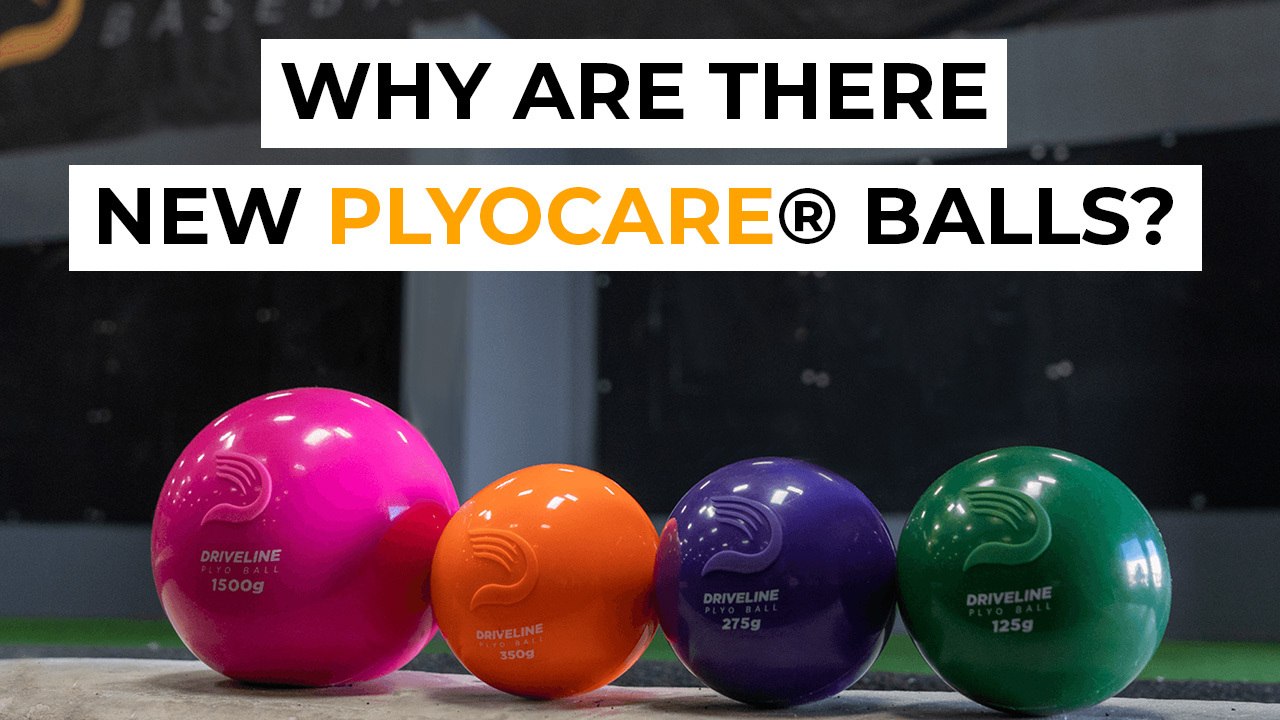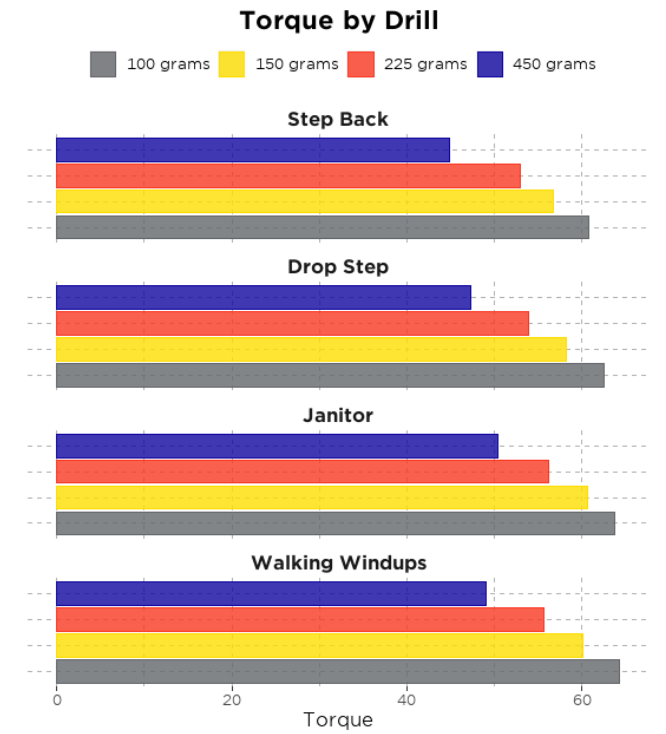Why Did We Make New Plyos?

By Stephen Hart, Pitching Coordinator
On August 5th, our set of expanded plyos will officially be released to the general public. Naturally, we’re incredibly excited as their release allows for greater programming flexibility and higher programming individualization for our athletes. But what was the driving force to make new plyos? How did they come about?
To answer that, we need to rewind the clocks to the summer of 2019. One evening, I was in our old building in Kent, WA, mulling over how best to program one of my new athletes. He was fairly experienced with our protocols and previously saw a sizable velocity jump with improved arm durability.
However, he expressed his concern that he felt his velocity had plateaued over the past few months. Considering his throwing history and training time with us that summer (2-3 months), I wanted to try something different with him. I just didn’t know what.
A Light Bulb Went Off
I distinctly remember watching our hitters smash plyos in front toss with their speed trainers. I picked up one of their white plyos and noticed it was 200g, a different weight than what was included in the standard set of 6 (black through grey) throwing plyos.
A light bulb went off.
I noticed all four of their hitting plyos were different weights than our set of 6 weighing in at 350g, 300g, 250g, and 200g. All of which weighed more than a baseball.
It dawned on me that I could put him into an overload phase as a means to present a more novel training (specifically throwing) stimulus. I would incorporate hitting plyos into my athlete’s throwing plyo routine!
Soon enough, more and more Driveline coaches began messing around with similar ideas if they felt it would benefit the athlete. We then asked ourselves, why can’t we do something similar with underload focuses? Fast forward a few years, and an expanded plyo set was born.
How have Driveline coaches used them in gym? How can you use them in your programs?
Overload/underload focuses during Velocity Phases
The most common way we have used the new plyos in-gym is to program athletes for overload or underload velocity phases. Previously, as the graphic below portrays, the standard set of 6 balls involved athletes throwing balls across the overload/underload spectrum. With these added balls, we can have more plyo ball options that allow us to program more focused overload and underload phases without sacrificing weight variability.

These more targeted over/underload phases can be great for athletes who:
- Have a lot of experience throwing plyos
- Have experienced or are experiencing a training plateau and could benefit from a more novel training stimulus
- Going through an on-ramping or developmental phase where a high amount of training economy is being spent in the weight room
- Would benefit from a more clear plyo progression throughout the offseason and preseason
There is plenty of evidence to support the use of overload and underload training to improve throwing velocity. In comparison, there may not be as much peer-reviewed evidence (to my knowledge) for specific and short-term periods of overload or underload training. However, I would be remiss not to bring up a great quote from renowned Russian track & field coach Anatoliy Bondarchuk:
In the track and field throws there is substantial evidence of the relationships between separate exercises in the same part of the complex training session. It turns out that using lighter, heavier, and competitive weights have a different effect on training transfer during periods of sports form development. In some instances, sports results can be increased only with throws using lighter, or heavier or competitive weights. Or, increases could be from the use of two of them, as for example, throwing the heavier and competitive weights. (26-27)
Anatoliy Bondarchuk
How does this apply to plyos?
For some higher-level or elite athletes, it is possible that more focused overload and underload training is needed when fighting for every inch of progress. And this is where these added plyos may come in handy, giving coaches and players more opportunity for program individualization, a hallmark of Bondarchuk’s training methodology.
Below is an example of how one can structure an overload focus with plyos and leather-weighted balls off the mound.
With this example, despite throwing baseballs and plyos slightly closer to the underload side of the spectrum (in 225g), we can see a more distinct shift towards the overload side of the spectrum.
On the other hand, below is an example of how one can structure an underload focus with plyos and pulldowns.
While the athlete is exposed to heavier balls with pivot picks and scap retraction throws, we can see a more distinct shift towards the underload side when we think back to the overload/underload spectrum—especially relative to the average plyo routine from the original set of 6.
PlyoVelo Calculator
Aside from more nuanced coach intuition, one quantitative method we use to bucket athletes into overload or underload phases is our Plyo Velo Calculator tool created by Player Development Analyst Hugo Belisario. With this tool, coaches can take a ‘baseline’ plyo velo session and input the athlete’s results from the session along with their peak velocity with a baseball on the mound.
Using this information, the calculator creates a report comparing the athletes’ actual’ plyo velo numbers to what we would ‘expect’ them to throw based on their mound velocity. Seeing a distinct ‘residual’ or difference between their ‘actual’ vs. ‘expected’ numbers can help us decide what phase the athlete is best suited for. The example below perfectly highlights the value of this tool combined with the new plyos!
The report below shows the results of a ‘baseline’ plyo velo. Because our athlete did not show several significant discrepancies between ‘actual’ and ‘expected’ velocity, he was bucketed for ‘Standard.’ Meaning that he would throw the standard set of 6 plyos in his upcoming training phase.
After the first training phase, we did a ‘retest’ plyo velo. A retest allows us to observe changes and get additional insight into what ball weight direction we could go next. Interestingly, this athlete was bucketed for an underload phase due to his amount of plyo experience coupled with the ‘residuals’ we saw with his underload balls.
After an underload-focused training phase, we retested again. We can see below that our athlete not only eliminated the negative ‘residual’ (highlighted in red above) but surpassed it with underload balls (highlighted in green below)! Thus, now being bucketed back to ‘Standard.’ In other words, our athlete got better at throwing underload balls (which he previously wasn’t great at) by focusing on them.
The expanded PlyoCare® set, when used in conjunction with the free PlyoVelo Calculator, provides coaches with a two-pronged programming attack. The new plyo set allows for increased programming options and more focused overload and underload training. While the plyo velo calculator helps provide direction and context as to what focus may benefit the athlete the most.
Gradually transition them from OV to UL beginning of off-season to Spring Training
Another method for utilizing these new plyos on a more macro level is to purposely transition athletes from an overload focus in the early offseason to a more general or non-specific focus in the late offseason, to an underload focus in the preseason. See this blog for more examples of this transition and gradual torque progressions using Pulse.
Post rehabilitation throwing programs
In a post-rehabilitation setting, it is very likely a good idea to begin by exposing the athlete to lower torque values while the body and arm adapts to the new stimulus. Then progress the athletes throwing over time by slowly exposing them to higher and higher torque values as training progresses. We can help mitigate exposing the athlete to higher than necessary torque values by throwing overload PlyoCare® balls.
Using Pulse, we have measured the average torque values by plyo ball weight for various drills across all athletes in-gym. There is a clear trend that shows the heavier the ball, the lower the torque value, regardless of the drill performed. This finding can likely be attributed to the heavier balls being thrown slower and an athlete’s arm moving slower than their lighter ball counterparts.

While some may view each Plyocare® set (the original six and the expanded set of 4) for the more beginner and advanced athletes. I think a better way to view these sets is complementary of each other.
By itself, the original set is fantastic as an introduction to PlyoCare® balls, improving arm fitness, developing a well-rounded warm-up routine, and more. On the other hand, the expanded set is fantastic for those that could benefit from a more focused overload/underload training phase or need a change of pace to help break through a training plateau.
But when used together, they provide more opportunities for individual athlete programming and a clearer path for PlyoCare® progressions throughout the year.
Works Cited
Bondarchuk, Anatoliy P, and Michael Yessis. “Interrelationships between Separate Training Sessions, Their Parts and Exercises.” Transfer of Training in Sports, vol. 2, Ultimate Athlete Concepts, pp. 26–27.
Comment section